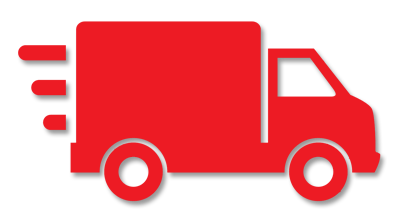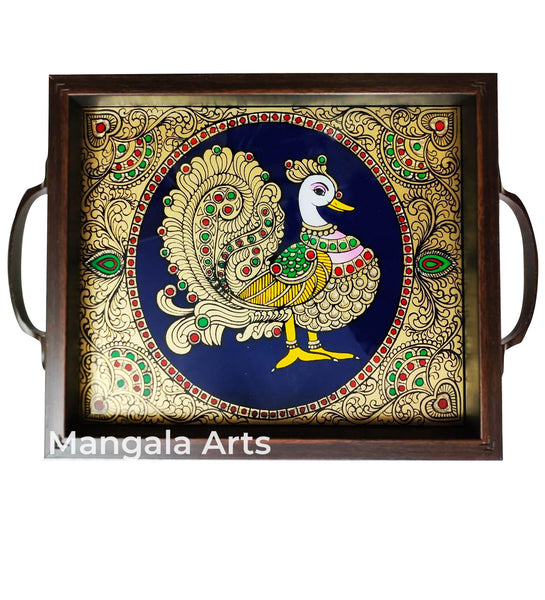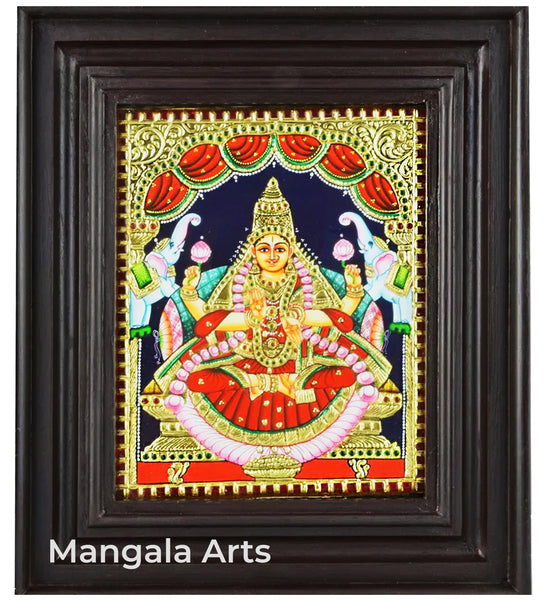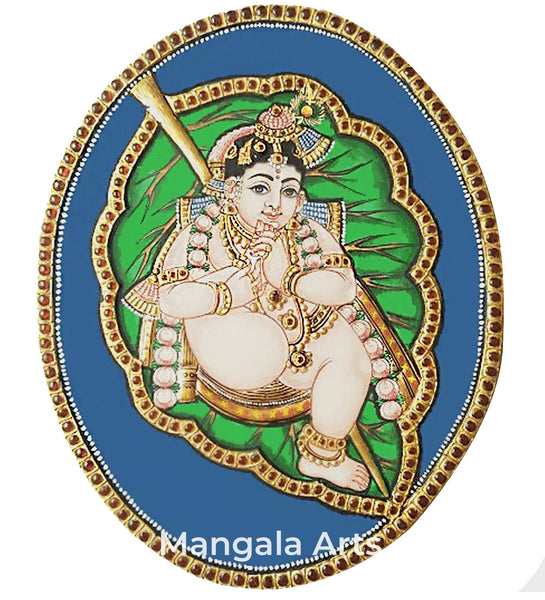
About

Vanmathi Balakrishnan
The founder Vanmathi Balakrishnan hails from Kumbakonam town in the Tanjore District. She has been trained in the traditional art form by the native artisans of the Tanjore region for several years.
Best Artist Painting

Latest Paintings Collection
Discover the World Through Original Paintings For Sale
Testimonials

Wonderful balaji tanjore painting that gives divine look to my pooja room.
– Mithra

Bought a beautiful customized painting. Awesome collections and great customer service.
– Mayank Pandey

Had a unforgettable painting at my home that gives luxurious look. Thanks to Mangala Arts and its artists.
– Shaiju

A great experience with Mangala Arts Team.
– Nirmal

Shipping Policy
For Shipping details
Latest Blog
How Modern Artists Reinvent Traditional Tanjore Painting Designs
November 28, 2025

There is something magnetic about old art. The charm just refuses to fade away. One such art is that of Tanjore painting designs. These paintings, framed in gold and reverence, have always lived inside temples, ancestral homes, and warm memories. Yet modern artists have rediscovered them. They have begun reshaping this ancient craft in ways that surprise even seasoned collectors. You will find new palettes, unique textures, digital twists, and global influences in these paintings. They create a strange harmony between heritage and modernity. And somehow, it still feels like a beautiful Tamil painting, beating with the same devotional pulse. Table of Contents The Living Soul of Tanjore Painting Designs Where Tradition Meets Fearless Experimentation New Themes, New Stories, New Audiences Digital Reinvention of Tanjore Painting Pictures FAQs Conclusion 1. The Living Soul of Tanjore Painting Designs Traditional Tanjore art was never static. Even centuries ago, artisans adapted lines, colors, and patterns to suit kings, temples, and patrons. So when you see modern artists reinterpret Tanjore painting designs, it’s all about continuity. They still lean on the iconic formula:• bold outlines• lush shading• gold leaf brilliance• gemstone ornamentation But something feels different today. You notice it in the expressions. They are gentler and more poetic. You sense it in the colors. They are sometimes pastel, sometimes neon, and sometimes impossibly soft. You see it in the themes. There is a Krishna with a dreamy calm, Lakshmi with cinematic detail, and even secular subjects appearing inside the sacred Tanjore format. Collectors searching for Tanjore paintings online often pause at these unusual variations because they blend nostalgia with fresh imagination. A familiar deity becomes a new emotional moment. An age-old aesthetic becomes a breathing artwork of the present day. 2. Where Tradition Meets Fearless Experimentation Modern artists have become fearless explorers. No longer restricted to traditional wood and cloth panels, they experiment with: acrylic on canvas textured plaster backgrounds matte gold finishes instead of high shine pastel gemstone palettes minimalistic detailing Some even create monochrome Tanjore painting images, stripping down the usual vibrancy to spotlight the raw structure beneath. This simplicity feels almost rebellious, yet it works. Color choices have changed too. Instead of deep royal tones alone, you might see: lavender Krishna emerald Ganesha rose-gold Saraswati muted earthy Ramayana scenes These unusual palettes feel refreshing. What remains untouched is the devotional gravity. Even experimental works radiate stillness. That balance of innovation and sanctity keeps the art form grounded. 3. New Themes, New Stories, New Audiences Traditional Tanjore art mostly depicted Gods, kings, and mythical scenes. Today’s artists paint: mother and child moments rural life classical music instruments feminine divinity in everyday gestures meditative abstract patterns inspired by Hindu symbolism These modern interpretations widen the audience. A person who never imagined owning a traditional piece suddenly connects with one that feels personal. Meanwhile, global buyers exploring Tanjore paintings online often gravitate to quirky reinterpretations. You will find minimalist Krishna silhouettes, gold-foil mandalas, and deity portraits framed like modern digital posters. These hybrid works travel easily across continents and cultures. Some artists even blend photography with painted ornamentation. They create avant-garde Tanjore painting pictures that feel both ancient and futuristic. 4. Digital Reinvention of Tanjore Painting Pictures Technology has tiptoed into the world of Tanjore art, not as a replacement, but as a spark. Digital artists study traditional strokes and recreate them using a stylus and a screen. Their Tanjore painting images circulate widely on social media, drawing younger audiences toward the art form. AI tools help in planning color schemes, symmetry, and layout before the physical painting even begins. This digital echo does something powerful. It preserves and spreads the style while giving artists new playgrounds to explore. Younger creators remix the art with animation, fashion prints, album covers, and minimalist posters. Even high-end brands borrow gold-leaf patterns and Tanjore-style borders for design projects. The lineage lives on, dressed in new robes. FAQs 1. Are modern Tanjore paintings still considered traditional? Yes. Artists today experiment with palettes and textures. However, the core structure, such as relief work, gold leaf, and traditional iconography, keeps the essence intact. 2. Do collectors prefer traditional or modern Tanjore painting designs? Both. Traditional designs appeal to heritage lovers, while modern reinterpretations attract younger buyers searching for fresh aesthetics. 3. Can Tanjore painting pictures be customized today? Absolutely. Many modern artists offer custom deity portraits, contemporary color schemes, and personalized compositions. Many are ordered through Tanjore paintings online platforms. 4. Are digital Tanjore painting images considered “authentic”? Digital versions are respected as creative expressions but are not classified as traditional handcrafted works. They serve as artistic reinterpretations, not replacements. 5. Why are modern Tanjore styles gaining popularity? Because they blend emotion, devotion, and modern taste. They feel timeless yet trendy and are perfect for homes seeking cultural warmth with contemporary charm. Conclusion The reinvention of Tanjore art is quite an evolution. Modern artists treat Tanjore painting designs like living beings capable of change. They bring in softness, boldness, and experimentation. They do not forget to preserve the gold, the devotion, and the iconic forms, but they breathe new colors, new emotions, and new stories into them. From traditional masterpieces to modern, beautiful Tamil painting variations, this beautiful art continues to glow as it has for centuries. Looking for timeless craftsmanship mixed with modern elegance? Mangala Tanjore Paintings offers traditional masterpieces and contemporary reinterpretations crafted with devotion. We preserve the detail and the authentic techniques. Explore our website today. Bring home a piece of heritage today.
Collectors’ Secrets: What to Look for in Authentic Tanjore Paintings for Sale
November 28, 2025

Every collector, whether new or seasoned, eventually feels the pull of a true beautiful Tamil painting. These paintings include Tanjore art that are filled with stories, glow with devotion, and carry the quiet magnificence of tradition. Tanjore paintings or Thanjavur paintings have a rare charm. When you explore Tanjore paintings for sale, the sheer radiance, the gold leaf shimmer, and the divine deities can make you pause. But is your painting for real, or is it an imitation? Authenticity hides in tiny clues, unusual details, and small decisions made by the artist’s hands. And that’s exactly where a thoughtful collector begins the search. Below, you’ll find the fine secrets and the little markers that are the quiet signs that help you choose original pieces, be it a peacock Tanjore painting, a royal Ramar Pattabhishekam Tanjore painting, or a soft, smiling butter Krishna Tanjore painting glowing in its frame. Table of Contents Understanding Real Tanjore Craftsmanship Key Elements That Reveal Authenticity How to Identify Quality Across Tanjore Painting Designs Reading the Stories Hidden Inside Tanjore Painting Images FAQs Conclusion Understanding Real Tanjore Craftsmanship True Tanjore art does not skip corners. It has layers within. You’ll notice the effect of these layers in the finish. There is a smoothness of the base, a balanced form to the deity, and a gentle glow in the colors. When browsing Tanjore paintings online or visiting a gallery, start with the foundation. Authentic paintings traditionally use a panel made from quality wood. This is typically teak that is covered with cloth, limestone paste, and natural gum. This layer should look firm, not crumbly. Old collectors often say: “If the base feels quiet, the art will not crack.” When you explore specific styles like Tanjore painting designs for deities such as Krishna, Balaji, Rama, or divine birds like the peacock, notice how the form is drawn. Original designs follow very particular proportions. The faces are round and bright, the eyes are deep, and the postures feel both still and alive. Key Elements That Reveal Authenticity The Shine of Real Gold The golden secret of Tanjore art is gold that is real. The Tanjore painting pictures typically shimmer with genuine 22-carat gold leaves. The shine of real gold is soft, never harsh. It glows instead of glittering. When you tilt the painting slightly, the light moves gently across the relief work. A duplicate piece often uses imitation foil. This is generally too bright and some might find it loud. Gesso Art for 3D Formations Next comes the relief work, known locally as “muthu work” or “gesso.” This creates the raised parts of the jewelry, thrones, ornaments, and arches. Run your eyes (gently, not literally your fingers if you’re in a gallery!) across the raised beads. They should look rounded, steady, and placed with intention, not random or uneven. A true Tanjore painting image has depth even without touching. You’ll sense dimension because every element sits in harmony. The stones, the gold, the colors, and the outlines all come together effortlessly. The Beauty of Gem Stones Fine stones also reveal authenticity. Skilled artists use semi-precious stones, not plastic or glass ones. These stones appear richer, heavier in color, and more grounded in the painting. How to Identify Quality Across Tanjore Painting Designs Different themes demand different artistic subtleties. A peacock Tanjore painting should have feathers that shine with clear lines, deep blues and greens, and precise strokes. A Ramar Pattabhishekam Tanjore painting must feel ceremonious. Look for balance across Rama, Sita, Lakshmana, Bharata, Shatrughna, and Hanuman. The throne, ornaments, and canopy should be detailed, not rushed. Good artists highlight devotion with gentle expressions. A butter Krishna Tanjore painting should feel playful but divine. Krishna’s face must look soft and full of charm. His eyes usually carry both innocence and mischief. If the facial expression feels dull or frozen, the soul of the work is missing. When exploring Tanjore paintings for sale, compare several designs. Authentic pieces often have irregularities; these are the slight variations that come only from human hands. Perfect symmetry usually belongs to machine-made reproductions. Reading the Stories Hidden Inside Tanjore Painting Images Tanjore art is storytelling in golden strokes. As a collector, notice the narrative inside the artwork. A true artist will not only paint a deity but also paint a moment. Look out for the small elements. The vahana, ornaments, background motifs, and postures carry cultural meaning and add depth to the painting. When you study Tanjore painting pictures, check how the artist expresses emotion. The warmth of Krishna, the calm of Rama, the grace of Lakshmi, and the strength of Shiva come through very strongly in authentic works. And remember: the story should feel alive even when the painting is still. That is the mark of real craftsmanship. FAQs 1. How do I check whether the gold in a Tanjore painting is real? Tilt the painting gently. Real gold shines warmly and softly. Fake foil looks overly shiny or metallic. 2. Are semi-precious stones necessary in authentic Tanjore art? Yes, traditional pieces use semi-precious stones. Plastic stones are a sign of mass-produced work. 3. Do Tanjore painting designs differ by artist? Yes. While themes remain similar, each artist adds personal style, especially in expressions, relief work, and detailing. 4. Are Tanjore paintings online trustworthy? They can be trusted but only if purchased from verified, traditional studios known for handcrafted work. Always request close-up images. 5. What subjects are most valuable for collectors? Collectors generally prefer classic themes like Krishna, Balaji, Rama, and peacocks. Pieces like peacock Tanjore painting, butter Krishna Tanjore painting, and royal scenes such as Ramar pattabhishekam Tanjore painting are highly sought after. Conclusion Collecting Tanjore art is all about welcoming a luminous piece of tradition into your space. When you explore Tanjore paintings for sale or browse Tanjore paintings online, pay attention to the details that matter. The structure, the materials, the relief, the stones, the expression, and the storytelling hidden within the gold are the cues. These elements turn simple Tanjore painting images into long-lasting treasures. So, when you are out to choose a beautiful Tamil painting to celebrate culture or add a rare design to your collection, look for its authenticity with these cues. Let your eyes look deeper than the shine, and you’ll always bring home a masterpiece. To bring home purity, tradition, and handcrafted artistic beauty, explore premium, authentic Tanjore masterpieces at Mangala Tanjore Paintings. Discover divine themes, classic designs, and expertly crafted gold work. Your perfect traditional artwork is waiting. Visit Mangala Tanjore Paintings!










